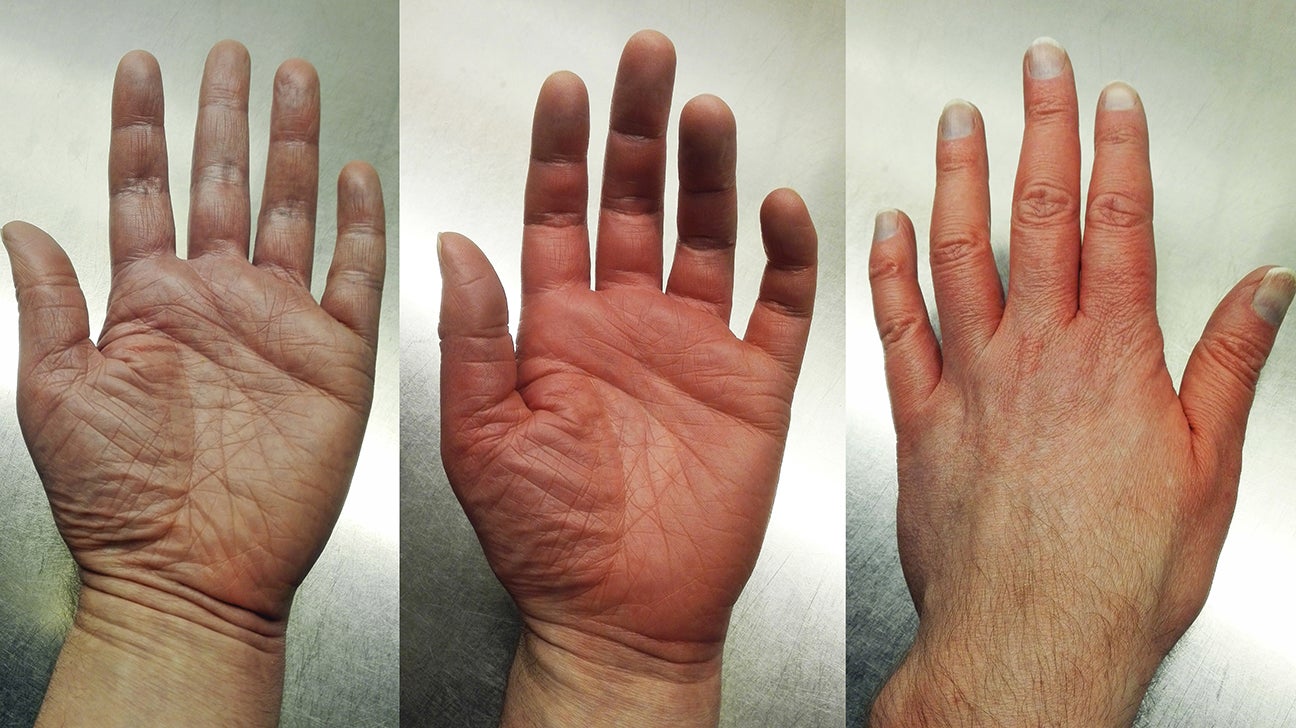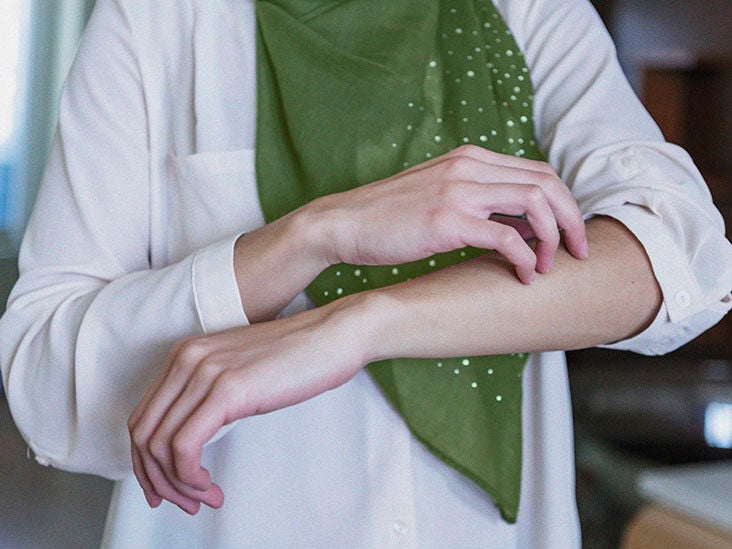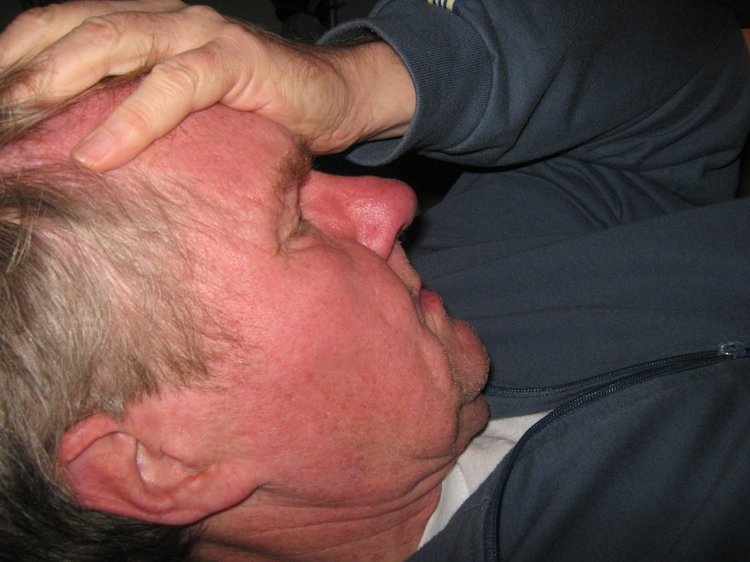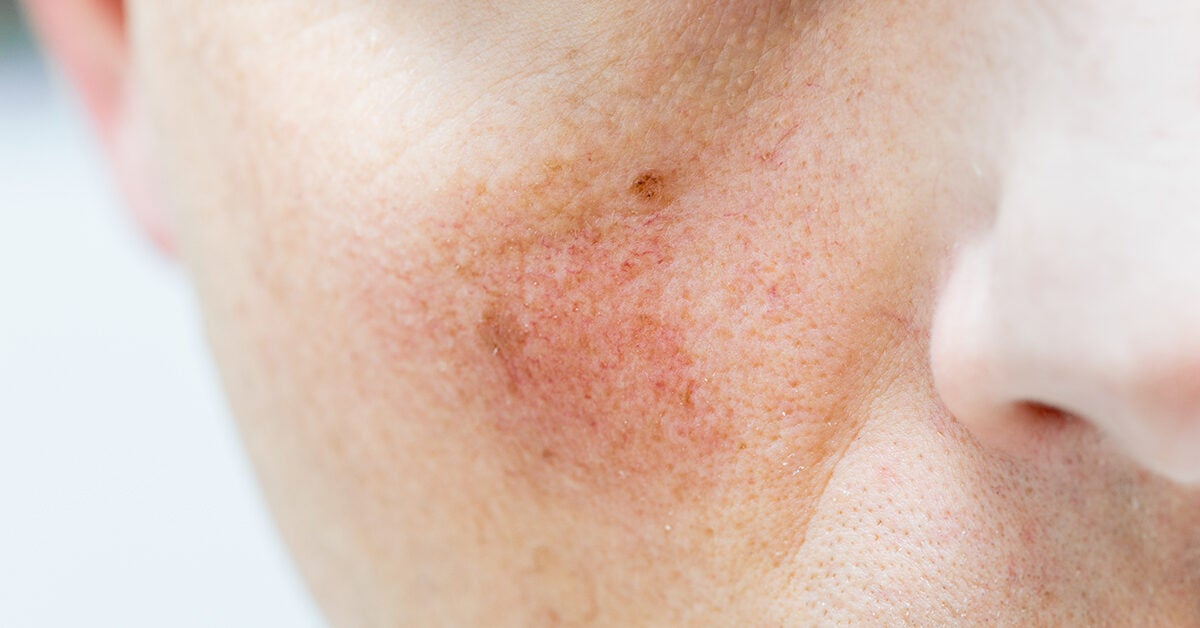Polycythemia or High Red Blood Cell Count is a condition that results in an increased level of circulating red blood cells in the bloodstream.
Thank you for reading this post, don't forget to subscribe!Patients with polycythemia have an increase in hematocrit, hemoglobin, or red blood cell count above the normal limits.
Polycythemia is normally reported in terms of increased hematocrit (the ratio of the volume of red blood cells to the total volume of blood) or hemoglobin concentration (protein that is responsible for transporting oxygen in the blood).
- Hematocrit (HCT): Polycythemia is considered when the hematocrit is greater than 48% in women and 52% in men.
- Hemoglobin (HGB): Polycythemia is considered when there is a hemoglobin level of greater than 16.5g/dL in women or hemoglobin level greater than 18.5 g/dL in men.
Polycythemia can be divided into two categories:
Primary polycythemia: In primary polycythemia, the increase in red blood cells is caused by inherent problems in the process of red blood cell production.
Secondary polycythemia: Secondary polycythemia generally occurs as a response to other factors or underlying conditions that promote red blood cell production.
Red cell production (erythropoiesis) takes place in the bone marrow through a complex sequence of tightly regulated steps. The main regulator of red cell production is the hormone erythropoietin (EPO). This hormone is largely secreted by the kidneys, although, about 10% may be produced and secreted by the liver.
Erythropoietin secretion is up-regulated in response to low oxygen levels (hypoxia) in the blood. More oxygen can be carried to tissues when erythropoietin stimulates red blood cell production in the bone marrow to compensate for hypoxia.
Neonatal polycythemia can be seen in 1%-5% of newborns. The most common causes may be related to the transfusion of blood, transfer of placental blood to the infant after delivery, or chronic inadequate oxygenation of the fetus (intrauterine hypoxia) due to placental insufficiency.
Polycythemia symptoms and signs
Symptoms and signs of polycythemia can be none to minimal in many persons. Some general and non-specific polycythemia symptoms include:
- weakness,
- fatigue,
- headache,
- itching,
- bruising,
- joint pain,
- dizziness, or
- abdominal pain.
In patients with polycythemia vera, other blood disorders are also very common. Thus, bleeding problems or clotting events may occur in these patients. Itching after showers or baths (post-bath pruritus) can also occur in patients with polycythemia vera for unclear reasons. Joint pains also are common in patients with polycythemia vera.
Tender redness of the palms and soles is called erythromelalgia.
Symptoms of secondary polycythemia may be more closely attributed to the underlying condition, such as chronic lung disease, than to polycythemia itself. Therefore, shortness of breath, chronic cough, sleep disturbance (sleep apnea), dizziness, poor exercise tolerance, or fatigue may be common in patients with polycythemia.
If polycythemia is related to kidney cancer, liver cancer, or other erythropoietin secreting tumors, the symptoms of these conditions — such as weight loss, abdominal pain or fullness, or jaundice — may be predominant. 
Normal ranges for red blood cells
- Hematocrit is the ratio of the volume of red cells to the volume of whole blood. The normal range for hematocrit varies between sexes and is approximately 45%-52% for men and 37%-48% for women.
- Red cell count signifies the number of red blood cells in a volume of blood. The normal range in men is approximately 4.7 to 6.1 million cells/ul (microliter). The normal range in women ranges from 4.2 to 5.4 million cells/ul.
- Hemoglobin is a protein in the red blood cells that carries oxygen and gives blood its red color. The normal range for hemoglobin may differ between the sexes and is approximately 13-18 grams per deciliter for men and 12-16 grams per deciliter for women.
Causes
Causes of polycythemia are primary or secondary.
- In primary polycythemia, abnormalities in red blood cell production cause an increase in red cell count.
- In secondary polycythemia, factors external to red blood cell production (for example, hypoxia, sleep apnea, certain tumors) result in polycythemia.
Primary polycythemias are due to acquired or inherited genetic mutations causing abnormally high levels of red blood cell precursors. Primary familial and congenital polycythemia (PFCP) and polycythemia vera (PV) are in this category.
Polycythemia vera
Polycythemia vera is a rare condition. Polycythemia vera is typically associated with an elevated white blood cell count (leukocytosis) and platelet count (thrombocytosis). An enlarged spleen (splenomegaly) and low erythropoietin levels are other clinical features of polycythemia vera.
Until recently, the exact mechanism of polycythemia vera was not well understood. In 2005, genetic mutations of the JAK2 gene were found to be responsible for most cases of polycythemia vera. These mutations are thought to possibly increase the sensitivity of the red blood cell precursors to erythropoietin, thereby, increasing red blood cell production.
Primary familial and congenital polycythemia (PFCP)
Primary familial and congenital polycythemia (PFCP) is also thought to be caused by genetic mutations resulting in increased responsiveness to normal levels of erythropoietin. Most cases are caused by different mutations to the EPOR gene.
Causes of secondary polycythemia 
Secondary polycythemia is usually caused by increased erythropoietin (EPO) production either in response to chronic hypoxia (low blood oxygen level) or from an erythropoietin secreting tumor.
Chronic Hypoxia
Common conditions causing chronic hypoxia are chronic lung diseases such as:
- emphysema and chronic bronchitis, which are collectively known as chronic obstructive pulmonary disease (COPD) or hypoventilation syndrome,
- chronic heart diseases (congestive heart failure, or abnormal flow of blood from the right side to the left side of the heart),
- sleep apnea, and
- pulmonary hypertension.
Abnormal blood flow to the kidneys can be perceived by the kidneys as decreased oxygenation (renal hypoxia), even though, other tissues may have normal oxygenation. Renal hypoxia may promote an increase in erythropoietin production. This condition can occur after kidney transplantation or narrowing of renal arteries (blood vessels supplying the kidneys).
People living in high altitudes can develop polycythemia. In high altitudes, increased red blood cell production occurs in order to compensate for the low ambient oxygen levels and inadequate tissue oxygenation.
Rare congenital defects in the hemoglobin molecule, such as 2, 3-BPG deficiency, can result in a higher oxygen affinity by hemoglobin. In these conditions, oxygen is held on tightly by hemoglobin and is less readily released from hemoglobin to the tissues. The resulting tissue hypoxia from poor oxygen delivery may lead to polycythemia.
Erythropoietin secreting tumors
Certain tumors can release an increased amount of erythropoietin. The most common erythropoietin secreting tumors are:
- liver cancer (hepatocellular carcinoma),
- kidney cancer (renal cell carcinoma),
- adrenal adenoma (adenocarcinomas), and
- uterine (womb) tumors.
Occasionally, benign kidney cysts and kidney obstruction (hydronephrosis) can also secrete extra erythropoietin causing polycythemia.
A rare genetic condition, called Chuvash polycythemia, causes increased activity of the gene that produces erythropoietin. The overproduction of erythropoietin causes polycythemia.
What are stress and smoker’s polycythemia?
Stress polycythemia is a term applied to a chronic (long-standing) state of low plasma volume, which is seen commonly in active, hard-working, anxious, middle-aged men. In these people, the red blood cell volume is normal, but the plasma volume is low. This condition is also known as Gaisbock’s disease, stress erythrocytosis, or pseudo polycythemia.
Smoker’s polycythemia is a similar condition in which increased levels of deoxygenated hemoglobin (hemoglobin that does not carry oxygen, instead carrying carbon dioxide) causes an increase in red blood cell counts.
Relative polycythemia 
In some forms of secondary polycythemia, the hemoglobin or red blood cell count is perceived to be abnormally high due to an increased concentration of blood. This can happen as a result of plasma volume loss from dehydration, severe vomiting or diarrhea, or hyperhydrosis (excessive sweating). Polycythemia in these situations may be called relative polycythemia, because the actual numbers of red blood cells are not abnormal.
Can other sources of erythropoietin (EPO) cause polycythemia?
Erythropoietin (EPO) has been made synthetically for clinical treatment of certain types of anemia. Some professional athletes have used this type of injectable EPO (blood doping) to improve their performance in competitions by producing more hemoglobin and, therefore, improving the delivery of oxygen to their tissues, mainly muscles. This type of doping practice is banned by many professional sport committees.
Risk factors
- Hypoxia from long standing (chronic) lung disease and smoking are common causes of polycythemia. Therefore, smoking can be a significant risk factor for polycythemia.
- Chronic carbon monoxide (CO) exposure can also be a risk factor for polycythemia. Hemoglobin has a higher affinity for CO than for oxygen; therefore, as it replaces oxygen in favor of CO, polycythemia may ensue to compensate for the low oxygen carried by hemoglobin.
- Chronic carbon monoxide exposure is a risk factor for people working in underground tunnels or parking garages, cab drivers in highly polluted and congested cities, or workers in factories with exposure to engine exhaust.
- People living at high altitudes may also be at risk of developing polycythemia due to low environmental oxygen levels.
- People with genetic mutations and familial types of polycythemia and certain hemoglobin abnormalities also carry risk factors for this condition as mentioned in earlier sections.
Diagnosis
Polycythemia may be diagnosed incidentally on routine blood work. Hemoglobin, hematocrit, and red blood cell concentration are typically found on a complete blood count (CBC). Repeating the laboratory tests (blood work) to confirm the diagnosis is usually advised to rule out possible laboratory or drawing errors.
More importantly, the cause of polycythemia needs to be determined. Medical history and physical examination are important components of the evaluation of polycythemia. The history usually includes questions about smoking history, living at high altitudes for extended periods, breathing difficulties, sleep disturbances, or chronic cough. Other parts of the history may focus on a prior diagnosis of lung disease, heart disease, kidney or liver cancer, bleeding or clotting problems.
A complete physical examination — including the assessment of body habitus (stature), vital signs, oxygen saturation, heart and lung exams, and evaluating for an enlarged spleen (splenomegaly) — is essential in the evaluation of people with polycythemia.
Evidence of a long-standing low body oxygen level (chronic hypoxia) is an important clue in patients with polycythemia. Signs of long-standing hypoxia may include cyanosis (blue or purple appearing finger, nail, earlobes, or lips), clubbing of the fingers (elevation of the nail beds outward), or pursed-lip breathing. Redness of the palms and soles may be another sign of polycythemia.
A chest X-ray, electrocardiogram (EKG), and echocardiogram may be performed to screen for lung disease or heart disease. Hemoglobin analysis may be necessary if conditions with high affinity for oxygen or 2, 3-BPG deficiency are suspected. If carbon monoxide poisoning is in question, a blood test can detect its level.
Erythropoietin (EPO) blood levels may also be helpful, although the results need to be interpreted carefully, as the level may be high in response to chronic hypoxia. In polycythemia vera, the EPO levels are low as a response to the increased production of red blood cells. In tumors secreting erythropoietin, the EPO levels may be abnormally high.
Polycythemia vera diagnosis
The diagnosis of polycythemia vera requires special attention. There have been traditional diagnostic criteria for this condition. However, in 2008, the World Health Organization (WHO) established the most recent guidelines. The guidelines include major and minor criteria.
- The major criteria for polycythemia vera include a hemoglobin level of greater than 18.5 gram/deciliter in men or 16.5 gram/deciliter in women (or similar numbers based on the hematocrit) and the presence of JAK2 mutation.
- The minor criteria include bone marrow evidence of increased red blood cell production and decreased EPO levels.
Allopathic treatment for polycythemia
The treatment for polycythemia is generally dependent on the cause.
In polycythemia vera or other primary polycythemia syndromes, the treatment options are more specific. Phlebotomy (drawing blood or blood-letting) is the most essential part of the treatment. The recommended hematocrit of less than 45 in men and less than 42 in women is the goal of phlebotomy.
Several medications have been considered in conjunction with phlebotomy to suppress the abnormal production of red blood cells. Most of these chemotherapeutic drugs have been linked with side effects and their use has been controversial and limited.
The medication hydroxyurea has been recommended for some patients with primary polycythemia and a higher risk of blood clot formation due to high blood viscosity. The factors favoring treatment with hydroxyurea are age greater than 70, platelet count greater than 1.5 million, and general cardiovascular risk factors.
Aspirin and other antiplatelet agents (dipyridamole) may also be beneficial in patients with polycythemia by reducing clotting complications unless the patient has a history of bleeding problems.
In patients with secondary polycythemia, the goal is to treat the underlying condition. For example, in patients with lung or heart disease with hypoxia, appropriate management of these conditions along with oxygen supplementation is generally advised.
Homeopathic treatment of Polycythemia
As we know that treatment of polycythemia is depends on its root cause; Homeopathy has too many medicines for the treatment of polycythemia and it’s causes for example:
To normalize the blood chemistry and normalize blood production – Click Here.
To treat blood viscosity and cholesterol – Click Here.
For kidney diseases – Click Here and Here.
For cancers – Click Here.
Complications of polycythemia
Potential complications of polycythemia vera are increased levels of circulating red blood cells, which increase the thickness or viscosity of the blood. This can be associated with higher risk of thrombus or clot formation leading to strokes, heart attacks, pulmonary embolism, and possibly death.
Another complication of polycythemia vera is the potential transformation into a blood cancer (leukemia), excessive bleeding (hemorrhage), or clotting problems.
Because of the high turnover of blood cells in polycythemia, the excretion of the byproducts of red blood cell degradation may overburden the kidneys and result in kidney dysfunction, kidney stones, and gout.
Finally, there is the potential for myelofibrosis (spent marrow), in which scar tissue eventually takes over the blood-forming marrow elements, resulting in anemia from marrow failure.
Complications of secondary polycythemia are typically related to those of the underlying disease. For example, chronic hypoxia from severe lung disease may be complicated by right-sided heart failure and pulmonary hypertension. Chronic heart failure can lead to generalized swelling or edema (anasarca), low blood pressure, kidney dysfunction, and poor functional status.
In neonatal polycythemia, increased blood thickness or viscosity can affect several organs due to poor blood flow. As a result, kidney dysfunction, intestinal problems, increased blood pressure in the lungs, and hypoxia may ensue.
For consultation; Feel free to WhatsApp us or visit our clinic.
P. S: This article is only for doctors having good knowledge about Homeopathy and allopathy, for learning purpose(s).
For proper consultation and treatment, please visit our clinic.
Location, address and contact numbers are given below.
None of above-mentioned medicine(s) is/are the full/complete treatment, but just hints for treatment; every patient has his/her own constitutional medicine.
To order medicine by courier, please send your details at WhatsApp– +923119884588
 Dr. Sayyad Qaisar Ahmed (MD {Ukraine}, DHMS), Abdominal Surgeries, Oncological surgeries, Gastroenterologist, Specialist Homeopathic Medicines.
Dr. Sayyad Qaisar Ahmed (MD {Ukraine}, DHMS), Abdominal Surgeries, Oncological surgeries, Gastroenterologist, Specialist Homeopathic Medicines.
Senior research officer at Dnepropetrovsk state medical academy Ukraine.
Location: Al-Haytham clinic, Umer Farooq Chowk Risalpur Sadder (0923631023, 03119884588), K.P.K, Pakistan.
Find more about Dr Sayed Qaisar Ahmed at:
https://www.youtube.com/Dr Qaisar Ahmed
